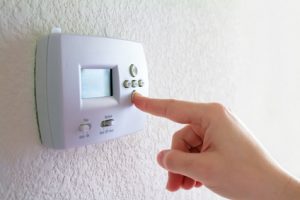Spring is here and now is the perfect time to prepare your home for warmer months. With a new season comes the opportunity to re-evaluate the energy efficiency of your home. These 8 tips are designed to help make your home more energy efficient and consequently lower your utility bills. (Tips courtesy of U.S. News)
Give your AC a tuneup. When the temperature starts rising, air conditioners start working overtime. Give your AC a tuneup early to ensure it runs efficiently, economically and safely throughout the season. When servicing your AC, you should replace your filters, check your refrigerant levels, and clean your evaporator coils. You may want to schedule an inspection and maintenance visit from a certified HVAC technician, who can make sure your system is up to speed and catch problems before they become major expenses. Routine maintenance can reduce your AC’s energy consumption by 15 percent.
Check your water heater. We may not need to heat our house during the spring, but most of us will continue to use hot water to shower and wash dishes. To avoid costly repairs in the future, drain a quarter of your water heater tank to remove sediment and debris at least once a year. Adjust the thermostat to 120 degrees, and you can avoid scalding temperatures while cutting down energy costs.
Clean out your fridge. It’s one of the biggest energy hogs in your whole home, with the average fridge using nearly 14 percent of a household’s energy. By properly cleaning out your fridge, you can reduce its energy consumption and cut down your electricity bill. Start by rolling your refrigerator away from the wall and using a duster or vacuum hose to clear the dirt and dust from the coils. Remove unneeded and old food from your fridge to allow air to circulate and increase efficiency. You shouldn’t leave your fridge completely empty, however; by keeping it about two-thirds full, you can prevent air from leaking out when you open the door. If your fridge is located near the oven or is in direct sunlight, you may want to move it to a cooler location to make it easier for the appliance to maintain a cold temperature.
Seal cracks. In warm weather, cool air can escape through the cracks and openings in your home as hot air leaks in. If you uncover sources of air leakage, you can seal the openings with a clear or paintable caulk. By sealing the air leaks in your home, you can cut energy costs by almost 30 percent while creating a healthier home environment and boosting the durability of the structure.
Be smart with your thermostat. Most experts agree that 78 degrees is the ideal temperature to save on energy costs while maintaining comfort during warm weather. For every degree you set your thermostat above 78 degrees during warmer weather, you could save an estimated 6 to 8 percent off your energy bill. When you leave your house, it’s an energy-smart move to raise your settings so that cooling will only occur if the temperature exceeds 88 degrees.
Embrace natural ventilation. In the springtime, you can often create a cross breeze that flows through the house for a natural cooling effect. Open your windows in the evening to flood the space with cooler air, and then close them in the morning before the day warms up to capture the cool. You might also consider installing insulated, thermal-back window coverings to keep heat from coming in through your windows.
Stay out of the kitchen. When you cook with a stovetop or oven, you can end up heating up your kitchen and adjacent rooms by several degrees. Save your AC from having to work overtime by cooking with a microwave or grilling outdoors whenever possible.
Invest in Energy Star appliances. If you are planning to purchase new appliances this spring, be sure they are Energy Star qualified. Energy Star refrigerators, dishwashers, and heating and cooling systems run more efficiently than older models and can reduce your home energy use by up to 50 percent. Not only do these appliances help you save on your bill, they can help reduce greenhouse gas emissions and water consumption. When you choose Energy Star appliances, you’re not only saving money, you’re helping to protect the environment.








